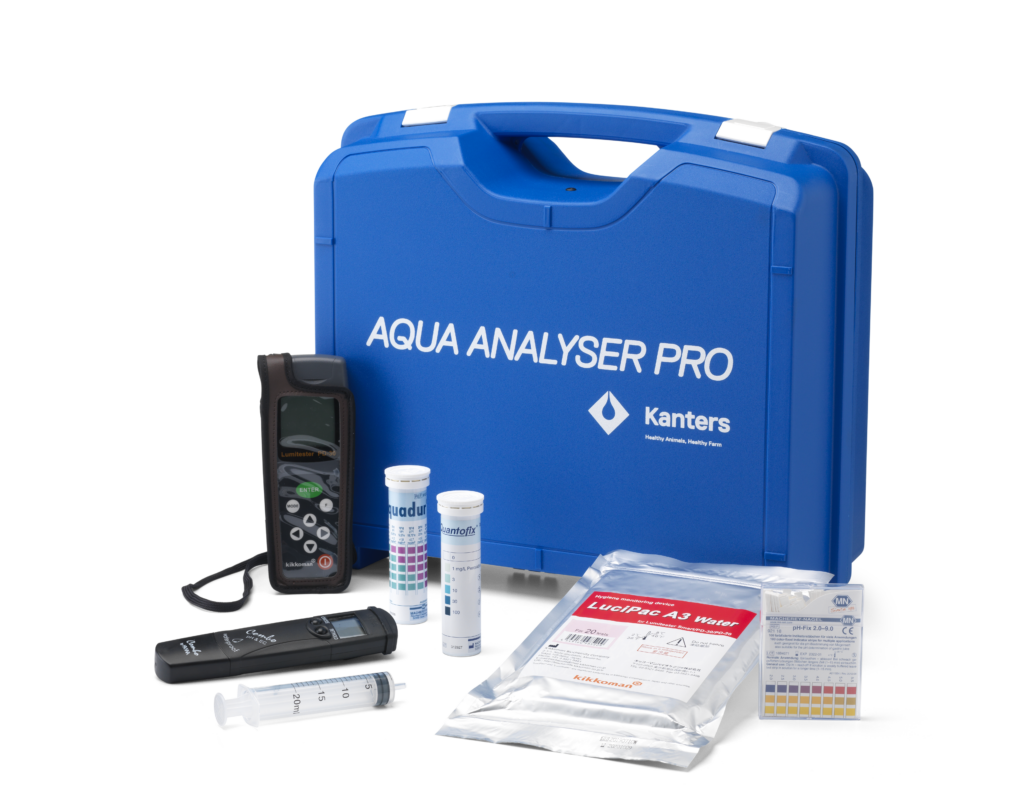Measuring equipment
Good and stable water quality is essential when we talk about water additives. But when do we have good water quality and when do we need to act to maintain good water quality? To properly assess water quality on site, Kanters has developed the Aqua Analyzer Pro. This toolkit makes it easy to determine whether water quality meets standards. But before we explain how the kit works, it is important to look into the water.

Aqua Analyser Pro
For drinking water for livestock, there are two key issues that are important. These are quality and availability. Depending on the outcome of these 2 factors, we can assess whether the water supply is sufficient for livestock. Important factors affecting water quality are:
- The source of the water supply;
- The construction of the drinking water system;
- The chemical composition;
- The biological content;
- Water pressure and water flow;
- The method of using potable water additives;
- Cleaning and conditioning of drinking water systems.
Achieve maximum results from drinking water additives
If water quality is insufficient, the water may interact with drinking water additives (drugs and acidifiers). As a result, these products will be less effective and/or cause fouling and/or sedimentation. At the same time, a contaminated pipe causes microorganisms to attach, resulting in a higher risk of digestive disorders. The water can also develop a taste deviation which often leads to lower water intake resulting in reduced feed intake, worsened immunity and reduced growth. Therefore, poor water quality causes reduced technical results and lower financial returns.
A clean drinking water system is the foundation
Besides the effects already discussed, we also see clogging due to lime, iron and manganese deposits. This leads to pressure loss, wear and tear, and abnormal yields. Of course, the system must also meet the requirements of the animal. It is important that during peak intake the water flow is sufficient, but at the same time you do not want spoilage due to leaking nipples or excessive water pressure. So keep in mind that many conditions affect the livestock’s water consumption.
Contact us
Form 6 Contact - Do you have a question?
"*" indicates required fields
